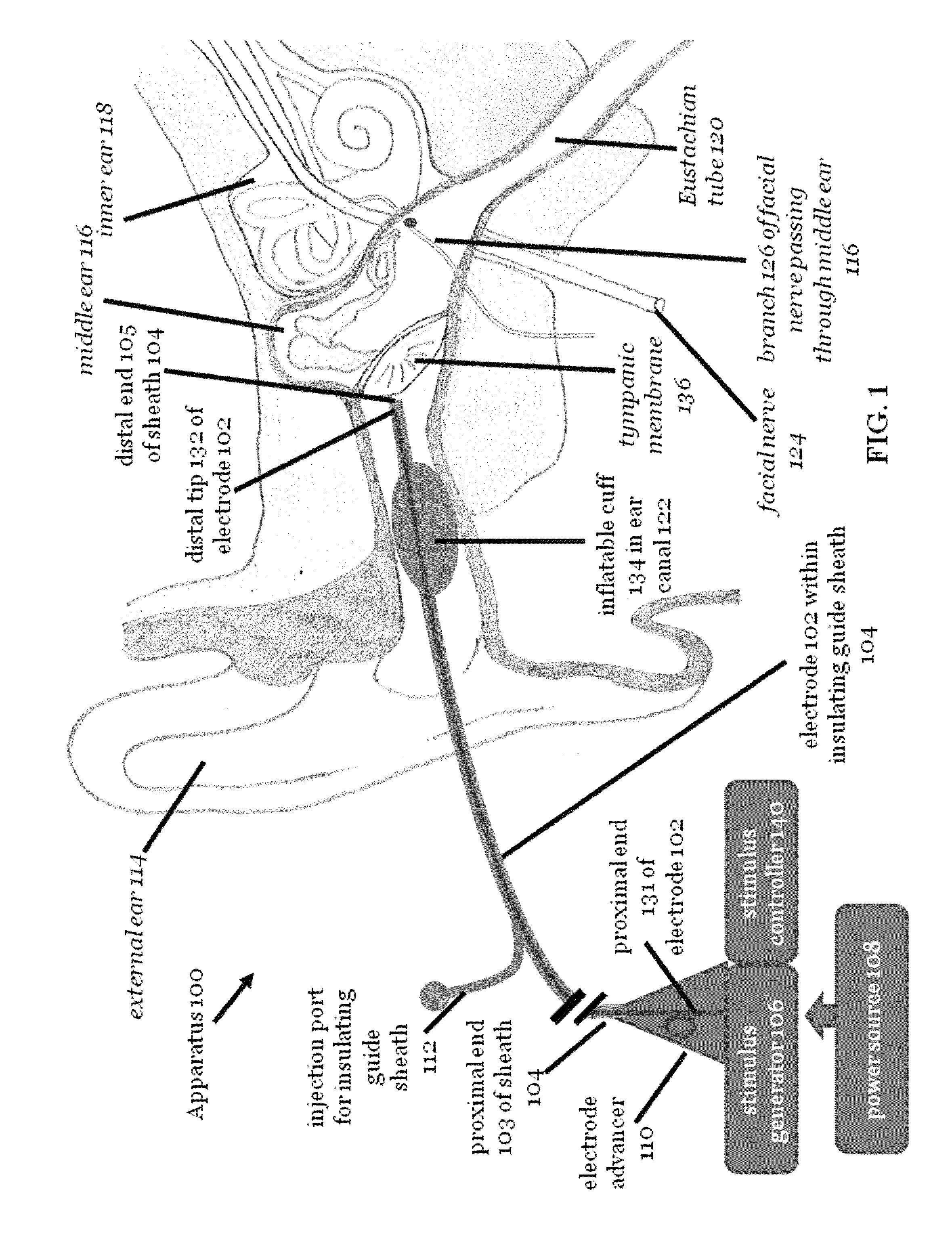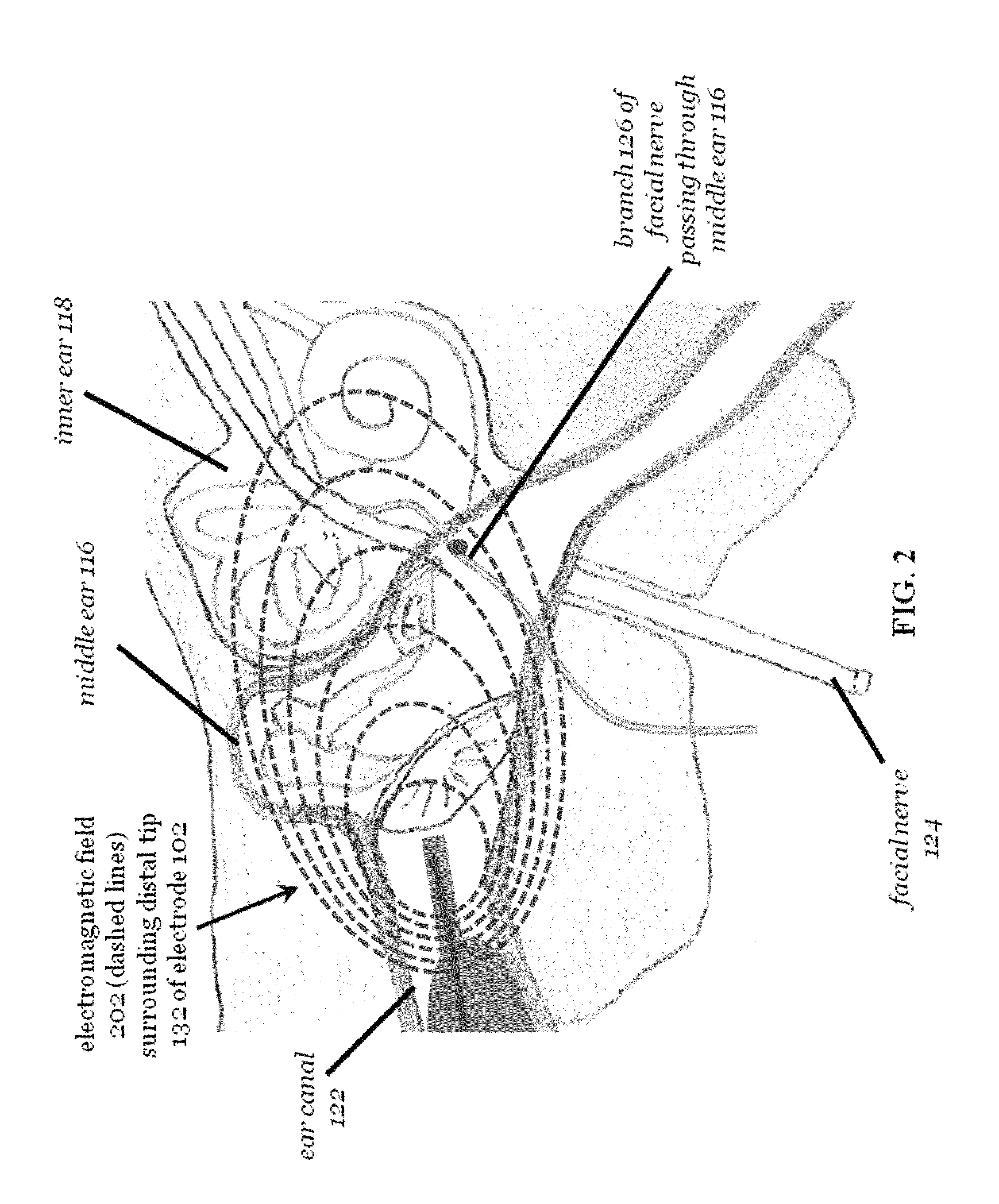Modulating function of the facial nerve system or related neural structures via the ear
a facial nerve system and neuronal technology, applied in the field of cranial vasculature treatment, can solve the problems of incalculable cost of healthcare services and productivity loss on such a scale, limited emergency treatment of stroke, cell death and tissue necrosis, etc., and achieve the effect of improving blood flow to the brain
- Summary
- Abstract
- Description
- Claims
- Application Information
AI Technical Summary
Benefits of technology
Problems solved by technology
Method used
Image
Examples
Embodiment Construction
Neural Structure Modulation Apparatus
[0047]The purpose of stimulation of the facial nerve system by the apparatus is to modulate the cranial blood flow. Modulation of the cranial blood flow includes increasing, decreasing, redistributing, or otherwise changing blood flow to the cerebral, carotid, and / or extracerebral arteries, including but not limited to the arteries of the brain, brainstem, face, scalp, eyes, and neck. In some embodiments, the apparatus stimulates the facial nerve system in order to increase blood flow to the brain of the subject for treatment of a stroke or to enhance delivery of a blood-borne pharmacologic agent to treat a condition of the subject. In other embodiments, blood flow to the brain or other parts of the head is decreased. As used herein, the term stroke refers to any type of stroke, and the phrase “stroke caused by atherosclerotic disease” refers specifically to stroke caused by atherosclerotic cerebral artery disease, which includes about 20% of all...
PUM
 Login to View More
Login to View More Abstract
Description
Claims
Application Information
 Login to View More
Login to View More - R&D
- Intellectual Property
- Life Sciences
- Materials
- Tech Scout
- Unparalleled Data Quality
- Higher Quality Content
- 60% Fewer Hallucinations
Browse by: Latest US Patents, China's latest patents, Technical Efficacy Thesaurus, Application Domain, Technology Topic, Popular Technical Reports.
© 2025 PatSnap. All rights reserved.Legal|Privacy policy|Modern Slavery Act Transparency Statement|Sitemap|About US| Contact US: help@patsnap.com



